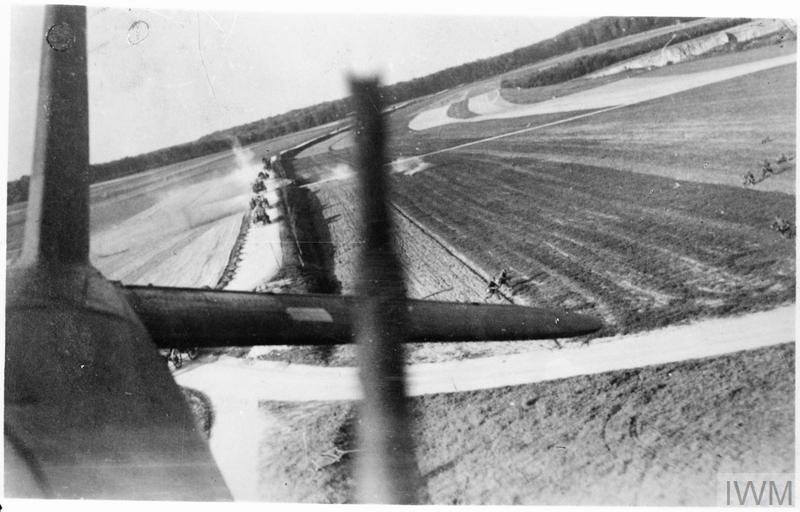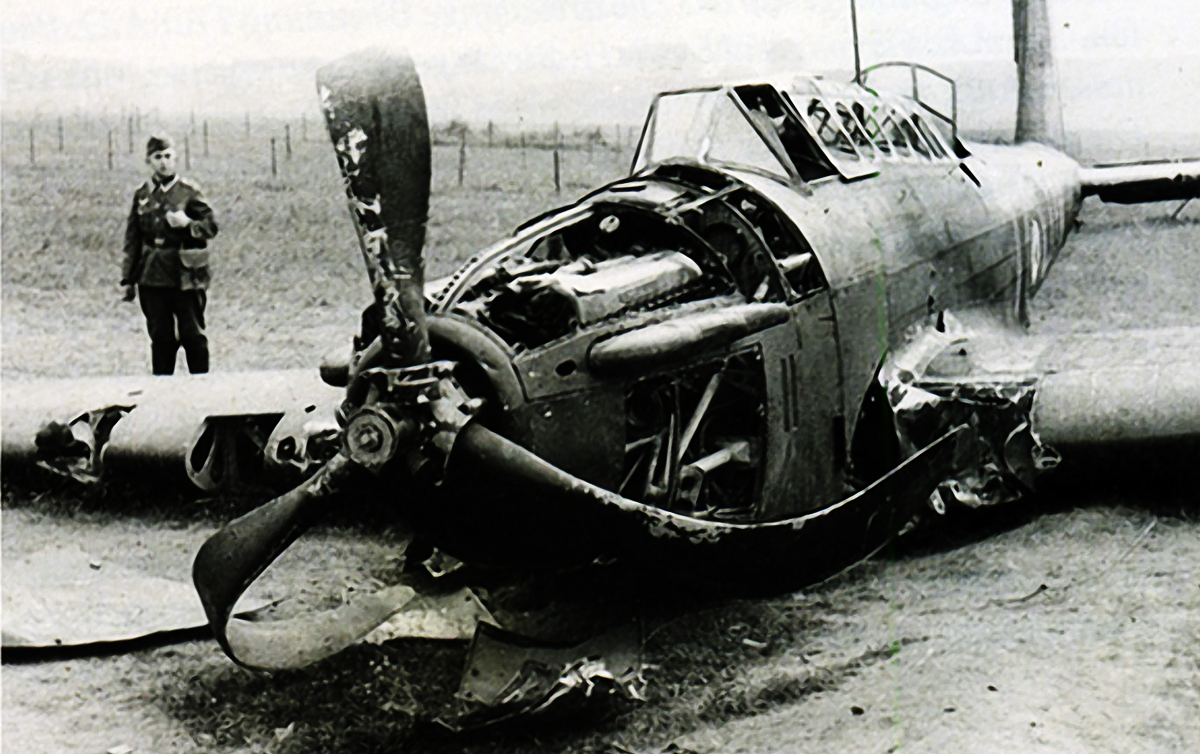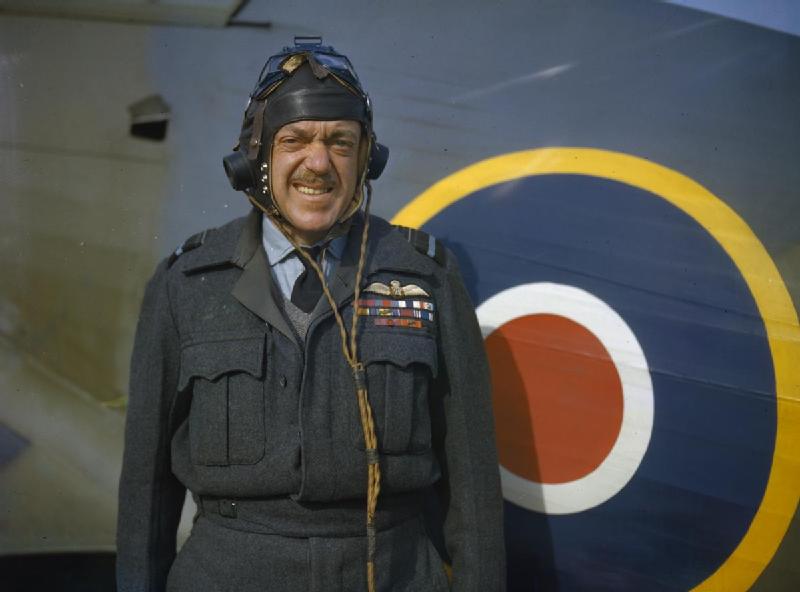Ever wondered how the RAF& #39;s Advanced Air Strike Force& #39;s bombers faired in the first few days of May?
Well you& #39;re in luck....
Well you& #39;re in luck....
The 9 May 1940 started in a very inauspicious way at 2:15 a.m. with a call from London to warn him that Germany had issued an ultimatum to the Dutch, however there was no confirmation from the attaché in The Hague though it seemed like another “flap” like November and April.
The squadrons were again brought to standby in readiness and although nothing came to pass that day they were held in a state of preparedness.
Early the following morning the Luftwaffe made the first move with small groups of bombers attacking airfields at Bethenville, Mournelen, Berrey-Au-Bac and Reims-Champagne dropping high explosives & incendiaries destroying hangers & tool sheds 3 of the AASFs Battles were lost
142 Squadron received their visitors at 4:35 a.m. with six He 111 Bombers attacking between 600 and 1000 feet but causing minor shrapnel damage to one Battle and a clutch of German ordinance which failed to explode at all
They received another attack at 6:00 a.m. with incendiaries dropped causing no damage. In total forty-three French, ten Dutch and eight Belgian airfields were hit on the first day destroying 210 aircraft though the German crews claimed up to 829 aircraft destroyed
Had the Luftwaffe intelligence been sharper then the casualties in the North of France could have been a lot worse with only twenty one of ninety one airfields being attacked with half of them not holding first line squadrons and Luftflotte 3s crews failed to find any target
By 6:00 a.m. news of German soldiers crossing the borders & paratroopers landing from Ju 52s reached the RAF & the Battle squadrons were brought up from Standby to Alert No.2 then quickly Alert No.3 but by 10:30 a.m. the Battles were still on the ground.
The Blenheims of the Component and AASF were sent on reconnaissance flights and spotted smoke over the Ruhr which obstructed most of their field of vision but vehicle columns a mile long were sighted heading north west from Kaldenkirchen
Three reconnaissance sorties in the norther sector were lost including P/O Thomas’ Blenheim of 57 squadron which came down at Echtveld at 11:30 a.m. with the crew all killed. F/Lt Wyatt of the same squadron was also injured in the arm by enemy fire
As the day unfolded news of a German assault on the low countries was reported the AASF were called to attack targets 10 times. At midday 8 Battles of 142 squadron, who& #39;d been on standby for 2.5 hours, took off to attack a German column on the Luxembourg to Dippoch road
The formation had 6 Hurricanes flying as top cover as the low flying Battles approached the target but the danger was not coming from Messerschmitts above them this time
As soon as the Battles were close enough the German Flak opened up filling the sky with shards of hot metal that eviscerated the lightly armoured Battles at point blank range
The two sections came in at 250 feet and dropped their four 250lb bombs, set with eleven second delayed fuses. Of the seven Battles who reached the target (P/O Chalmers had returned following a problem with his landing gear) three failed to return.
Sgt Spears and his crew managed to escape the Germans following their crash landing at Colmey whereas F/O Roth and his gunner were not so lucky and were taken away to the rear of the German advance and P/O Laws’ Battle crashed killing his crew.
Other aircraft were severely holed with crewmen like LAC Cave, who was hospitalised on the return to base. P/O Corbett received a DFC for bringing his Battle back with an injured ankle and his observer, Sgt Irvine, dead.
Despite these loses the Squadron’s record of events records proudly; “No. 142 Squadron was the first Squadron in the AASF to carryout operations on enemy columns.”
AVM Barratt (below) dispatched other squadrons throughout the day to harass the columns with 150 squadron taking off in 2 sections of 2 & one of 3 taking off between 2:45 and 3:57p.m.
Like 142 squadron they had had five aircraft on standby since 5:30 a.m. which was increased to eight at 9:45 a.m. and didn’t receive their preliminary orders until 1:10 p.m.
The first wave led by F/Lt Weeks bombed the column found between Neufchateau and Bertrix attracting a similar hail of fire but Weekes and Sgt Andrews’ two Battles returned with P/O Campbell-Irons disappearing.
The second wave also were never seen again after take off whereas the third wing led by F/O Blom whose aircraft had been hit over Differdange by Flak rupturing a petrol tank filling the cockpit with petrol fumes which impaired the crew’s vision and caused “Intense discomfort.”
They failed to find a target between Luxembourg and Echternach but managed to find one near Gevenmacher and attacked at 100 feet and strafed with forward and rear guns but Sgt White’s Battle disappeared not long after the attack.
Blom would later receive the DFC for attacking the column with his damaged aircraft despite the four missing aircraft only F/Lt Parker was killed with five men taken prisoner and Sgt White’s crew making a delayed evasion arriving on the 13 May
Three of 103 squadron& #39;s four Battles were shot down
F/Lt E Parker& #39;s wrecked Battle under guard
with P/O Drabble, Sgt Smith and LAC Lamble were all killed as were Sgt Poole and LAC Hutchinson of Sgt Lowne’s crew whereas P/O Wells and his crew as well as Lowne were all captured.
F/Lt E Parker& #39;s wrecked Battle under guard
with P/O Drabble, Sgt Smith and LAC Lamble were all killed as were Sgt Poole and LAC Hutchinson of Sgt Lowne’s crew whereas P/O Wells and his crew as well as Lowne were all captured.
10 May’s sorties showed that the columns were not as easy targets as RAF planners hoped but also that the Battle and low flying Blenheims were exceptionally vulnerable to concentrated Flak.
It was not just mobile flak batteries firing at the RAF but even German infantry firing rifles and motorbike and sidecar riders firing their mounted MG 34s! The AASF report stated:
"Even at this early stage of operations the difficulties of operating against fleeting targets became evident. The Columns against which raids had been dispatched proved to have dispersed or to have moved elsewhere by the time the raid reached the area of operations."
This was the same problem encountered by Bomber Command over Heligoland coupled with murderous anti-aircraft fire and the threat of aerial superiority from German fighters.
A further raid was authorised in the early evening when it was hoped that the failing light would mean there was less chance of being caught by marauding Messerschmitts especially as there were no Hurricanes or French fighters available for escort duties.
2 half sections totalling 4 aircraft from 12 Squadron took off between 4.50 and 5.05 p.m. They encountered “heavy crossfire” from the ground which severed F/lt Hunts bomb control cable & he retired to Piennes whilst Sgt Young, P/o Hulse’s observer was wounded in the shoulder.
Through the fire F/lt Simpson dropped his four bombs and pulled away but was quickly informed by his observer, Sgt Odell that petrol was streaming from the tanks and he soon noted that the engine was starting to stutter as they crossed the frontier.
Knowing they would not make it back to base Simpson decided to put the Battle down in a field at 6:15 p.m. Odell and LAC Thomlinson pulled themselves free of the now burning wreck only to realise that Simpson was still in the cockpit and hurried to save their pilot
Although Tomlinson received burns to his hands pulling a similarly burnt Simpson between the two of them they managed to get 150 yards away before the Battle blew up. For their bravery Tomlinson and Odell received the DFM and Simpson the DFC.
The only other aircraft not to come back was P/O Matthews who was reported last seen landing in a field at 6:00 p.m. but the whole crew were captured.

 Read on Twitter
Read on Twitter




